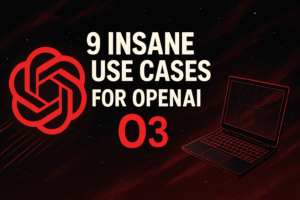Introduction
Embarking on the journey of building a Software as a Service (SaaS) business can be both exciting and daunting. With extensive experience in the SaaS industry, seasoned entrepreneurs have developed systematic approaches to launching and scaling successful software companies. The beauty of the SaaS model lies in creating a product once and generating recurring revenue month after month. Contrary to popular belief, you don’t need massive capital, a large development team, or years of waiting before your product gains traction. The secret? Start by identifying a genuine problem, validate your solution with real users, and then build and refine your product based on their feedback. All you need is a solid plan and the right approach.
This 7-step guide serves as your roadmap to building a SaaS business from the ground up:
1. Identify a Real Problem
- Engage with the Industry: Dive deep into the industry you’re interested in to uncover unmet needs and pain points.
- Consult and Listen: Offer consulting services or have conversations with potential users to understand the gaps in existing software solutions.
- Focus on Existing Frustrations: Instead of inventing new ideas, zero in on the recurring challenges and frustrations that people are already experiencing.
- Create a ‘Frustration List’: Document common problems that need effective solutions.
- Analyze Manual Processes: Look at spreadsheets and manual workflows professionals use; these often highlight opportunities for automation.
- Stay Ahead of Trends: Keep an eye on emerging markets and trends to identify new challenges that lack solutions.
2. Build a Prototype
- Develop a Clickable Prototype: Before diving into full-scale development, create a simple prototype that demonstrates your concept.
- Gather User Feedback Early: Test the prototype with potential users to collect feedback and ensure you’re on the right track.
- Use Accessible Tools: Utilize tools like sketches on paper, Balsamiq, Figma, or InVision to bring your prototype to life without significant investment.
3. Validate Your Product
- Seek Financial Commitment: Validate market interest by getting potential customers to commit financially, even in small amounts.
- Launch an Early Adopter Program: Invite early supporters to invest in your product’s development, offering them benefits like discounted pricing or exclusive features.
- Consider Crowdfunding: Platforms like Kickstarter or Indiegogo can help you gauge interest and raise initial funds.
4. Develop a Minimum Viable Product (MVP)
- Keep It Lean: Focus on essential features that solve the core problem, avoiding the temptation to overbuild.
- Set a Tight Timeline: Aim to develop and launch your MVP within three months to stay agile and responsive.
- Be Cost-Efficient: Minimize expenses by hiring freelancers through platforms like Upwork or using no-code solutions for rapid development.
5. Gather and Act on Customer Feedback
- Engage Directly with Users: Have one-on-one conversations with your early users to understand their experiences.
- Identify Patterns: Look for common feedback themes to prioritize improvements that will impact the majority.
- Avoid the ‘Loud Minority’: Focus on features that will benefit most users, rather than catering to a small group with specific requests.
6. Generate Demand
- Leverage Multiple Channels: Use partnerships, paid advertising, content marketing, and press releases to increase visibility.
- Form Strategic Partnerships: Collaborate with other businesses or influencers to tap into larger audiences, offering mutual benefits.
- Invest in Content: Create valuable content that positions you as an expert and attracts your target audience organically.
7. Find a Unique Growth Strategy
- Discover Your ‘Growth Hack’: Identify innovative, cost-effective methods to acquire customers that your competitors haven’t tapped into.
- Be Creative and Ethical: Think outside the box while ensuring your strategies align with ethical standards and long-term business goals.
- Test and Iterate: Continuously experiment with new tactics, measuring their effectiveness and adjusting as needed.
Conclusion
Building a successful SaaS business doesn’t require vast resources or an extensive team. By concentrating on real-world problems, validating your ideas with actual users, starting lean with an MVP, and employing innovative growth strategies, you can create a product that not only meets market needs but also has the potential to scale rapidly. Stay focused on delivering value, remain adaptable based on feedback, and keep exploring creative avenues for growth. With dedication and the right approach, your SaaS venture can become a thriving success story.







